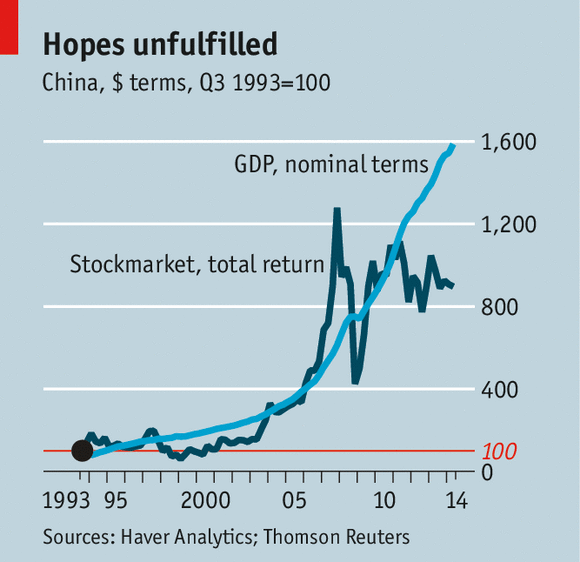Hard Assets Not the Easiest Investment Play
Post on: 6 Май, 2015 No Comment

It’s easy enough to shrug off the growing demand among investors for commodities and other natural resources. After all, the economic recovery is sure to boost consumption of oil and other fuels, as well as larger quantities of base metals, steel, and timber as industrial production rebounds. Then there’s the longer-term argument that growing populations and the reach for a better standard of living in emerging economies ensure increased demand for agricultural products and the flow of natural resources into the building of roads, bridges, and electricity grids for decades to come.
Astute investment advisers have long recommended some exposure to commodities for their clients in order to diversify their portfolios from the performance of stocks and bonds. Now there’s an additional case to be made for commodities and hard assets: protection. The idea that commodities provide a hedge against rising inflation isn’t new, but it’s being augmented by mounting concerns about the risk of disorderly devaluations of the U.S. dollar and other currencies and runaway inflation some years out. The worries about the greenback and inflation stem from concerns about the consequences of central banks printing excessive amounts of money to pay for huge government stimulus programs.
Hence, the 9.8% jump in gold prices since the beginning of September. The SPDR Gold Shares ETF (GLD) currently holds nearly $40 billion worth of gold bullion sitting in London bank vaults. That makes it the sixth-largest holder of gold in the world, right on par with what China or Switzerland holds, according to Paul Justice, an ETF strategist at Morningstar (MORN).
Widespread Investor Interest There’s much more interest by institutions, endowments—every investor cohort—for inflation protection, for [emerging-market] plays, says Derek van Eck, chief investment officer at Van Eck Global and co-manager of the Van Eck Global Hard Assets Fund (GHAAX). A lot of that is being driven by the policy stances taken globally by central bankers.
It turns out, however, that getting exposure to hard assets with low correlation to other asset classes isn’t as easy as it sounds. Although a host of fairly new exchange-traded products based on commodities are available, the only ETFs backed by physical commodities are in precious metals.
The interest in physical metals comes down to practicality of storage, says Justice at Morningstar. For other commodity classes, it doesn’t make a lot of sense to use physical commodities. Natural gas would evaporate and corn and wheat require silos and have the added risk of spoilage, he says.
Commodity futures are the instrument of choice for most retail investors, appealing for the lack of storage costs and their relative liquidity. Since you don’t have to pay the full price of a commodity unless you end up taking delivery once a contract expires, you have more money available on which to earn interest, even if it’s been set aside as collateral for the futures transaction, says Justice.
Closer scrutiny by the Commodity Futures Trading Commission (CFTC) and the threat of more stringent position limits to discourage speculation make ETFs backed by futures contracts less attractive than they once were. Regulators should be less concerned about commodity speculation by ETFs than by individual investors since an ETF is a pool of investors [and] it’s hard to say a mass of people are all speculating in the same manner, says Justice.
Funds Hold Equity in Hard Assets Producers The idea behind the actively managed mutual fund and exchange-traded funds that Van Eck Global provides is to give investors access to hard assets via funds that take equity positions in natural resources producers. In other words, owning the firms that dig the assets out of the ground, rather than delivery contracts for the materials.
But would owning more paper assets really help you sleep at night if it’s something tangible you want to own?
Jim Rogers, the celebrated investment expert and longtime proponent of hard assets, seems to think so. He helped develop the Rogers-Van Eck Hard Assets Producers Index, on which the RVE Hard Assets Producers ETF (HAP), from Van Eck, is based. The top 10 holdings of the ETF include seed companies Monsanto (MON) and Syngenta (SYT), fertilizer producer Potash Corp. of Saskatchewan (POT), such integrated oil producers as ExxonMobil (XOM), Chevron (CVX), and BP (BP), and agriculture titans Archer Daniels Midland (ADM) and Deere (DE). But the fund also has a 4% allocation to renewable resources with names such as wind producer Vestas and First Solar (FSLR).
The other seven Van Eck ETFs are narrowly focused on companies that produce either steel, nuclear power, coal, or other products. The Market Vectors Coal ETF (KOL) holds companies such as Peabody Energy (BTU) and Consol Energy (CNX), while the Market Vectors Gold Miners ETF (GDX) offers such names as Barrick Gold (ABX) and South Africa-based AngloGold Ashanti (AU).
While they don’t provide the diversification that the underlying commodities do, there’s a reasonable case to be made for owning producer equities, says van Eck. Six months ago, they were a great value opportunity and they’re attractive now more because of how much earnings momentum will be driven by higher commodity prices, he says.
More Upside in Equities There are better risk-reward characteristics in equities than the underlying commodities, he says. An investor currently pays $82 a barrel for crude futures, while the energy stocks at current valuations are factoring in a price of $70 a barrel, 15% to 20% cheaper, he says. He believes the energy stocks are currently underpriced.
In order for there to be a material lift in commodity prices themselves, we would need to have a reasonable economic recovery kick in. So far, there have only been tentative signs of a pickup in demand from the more developed economies, he says.

Van Eck’s favorite theme right now is the exploration and production side of energy. In addition to revenues tracking commodity prices fairly closely. these companies get the benefit of widening profit margins due to the oversupply of drilling rigs, which brings down the prices of rigs and pressure pumping services, he says.
Because producer stocks offer a much lower correlation to agricultural commodities, you need to go into fertilizers and seed companies, and they tend to be more processors than direct producers of the commodities, he says.
He’s starting to see some good value in fertilizer stocks, which he sees as early indicators of improving farmer income once corn and wheat prices start to rise again. (BusinessWeek’s Gene Marcial recently featured the sector in his online column.)
ETFs Backed by Physical Gold Ultimately, the pursuit of true hard assets that are more able to withstand another economic torrent may prove illusory. Even the physically backed gold ETFs may not be all that they appear to be. At an Oct. 8 event in mid-Manhattan sponsored by ETF Securities, audience members asked for assurances that the London-based firm actually owns and audits its own gold inventories rather than relying on subadvisers that don’t audit inventories and even lend them out, as the SPDR Gold Shares ETF is believed to do.
Kipley Lytel, managing partner at Montecito Capital Management in Los Angeles, recognizes that the commodity ETFs have some flaws, even those that are backed by physical gold. For example, there’s a lot more invested in these funds than there is physical gold in storage readily available to investors, he says.
That doesn’t stop him from using the SPDR Gold Shares ETF and the iShares Silver Trust (SLV), but only as complements to the precious metals he buys for clients through Jersey City-based Templar Integrity Partners. That firm will either deliver gold and silver bars to his clients or store them in a depository for a small fee.
In the end, truly effective ways to own hard assets may be a little beyond the reach of all but the wealthiest investors. Of course, if you have a secure warehouse or giant silo in your backyard…
Bogoslaw is a reporter for Bloomberg Businessweek ‘s Finance channel.














